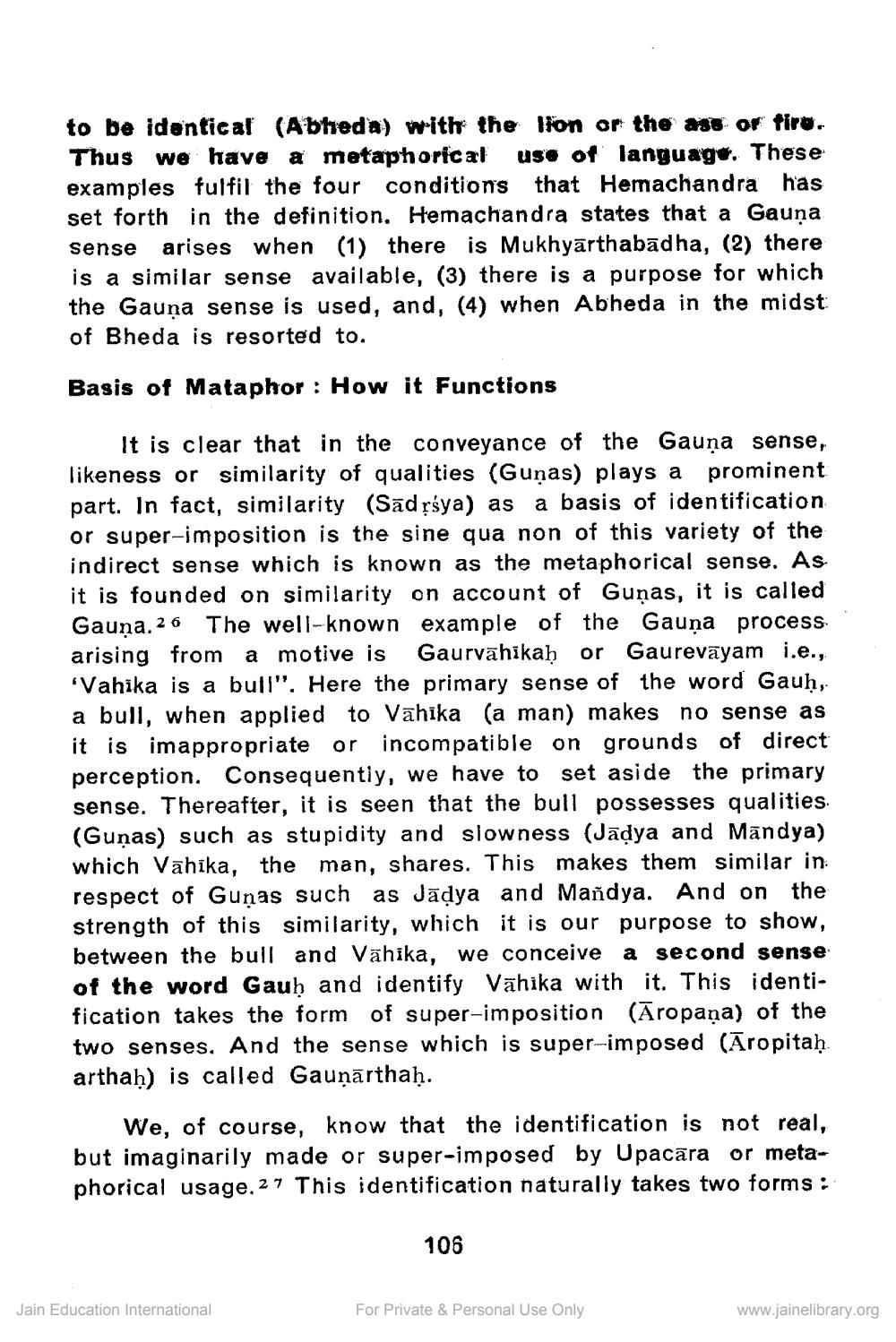________________
to be identical (Abtreda) with the lion or the ass or tiro. Thus we have a metaphorical use of language. These examples fulfil the four conditions that Hemachandra has set forth in the definition. Hemachandra states that a Gauņa sense arises when (1) there is Mukhyārthabādha, (2) there is a similar sense available, (3) there is a purpose for which the Gauna sense is used, and, (4) when Abheda in the midst of Bheda is resorted to.
Basis of Mataphor : How it Functions
It is clear that in the conveyance of the Gauņa sense, likeness or similarity of qualities (Gunas) plays a prominent part. In fact, similarity (Sadrsya) as a basis of identification or super-imposition is the sine qua non of this variety of the indirect sense which is known as the metaphorical sense. As it is founded on similarity on account of Guņas, it is called Gauņa.26 The well-known example of the Gauņa process. arising from a motive is Gaurvāhikah or Gaurevāyam i.e., 'Vahika is a bull". Here the primary sense of the word Gauh a bull, when applied to Vāhika (a man) makes no sense as it is imappropriate or incompatible on grounds of direct perception. Consequentiy, we have to set aside the primary sense. Thereafter, it is seen that the bull possesses qualities. (Guņas) such as stupidity and slowness (Jādya and Mandya) which Vāhika, the man, shares. This makes them similar in respect of Guņas such as Jādya and Mandya. And on the strength of this similarity, which it is our purpose to show, between the bull and Vähika, we conceive a second sense of the word Gauḥ and identify Vähika with it. This identification takes the form of super-imposition (Āropaņa) of the two senses. And the sense which is super-imposed (Āropitaḥ arthah) is called Gauņārthah.
We, of course, know that the identification is not real, but imaginarily made or super-imposed by Upacara or metaphorical usage. 27 This identification naturally takes two forms:
106
Jain Education International
For Private & Personal Use Only
www.jainelibrary.org




